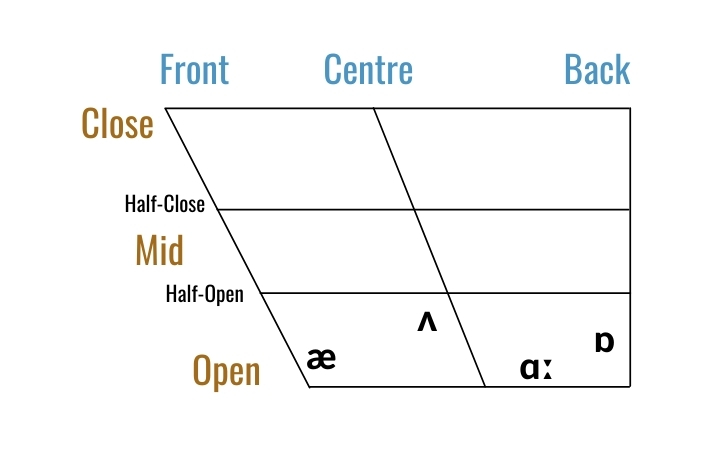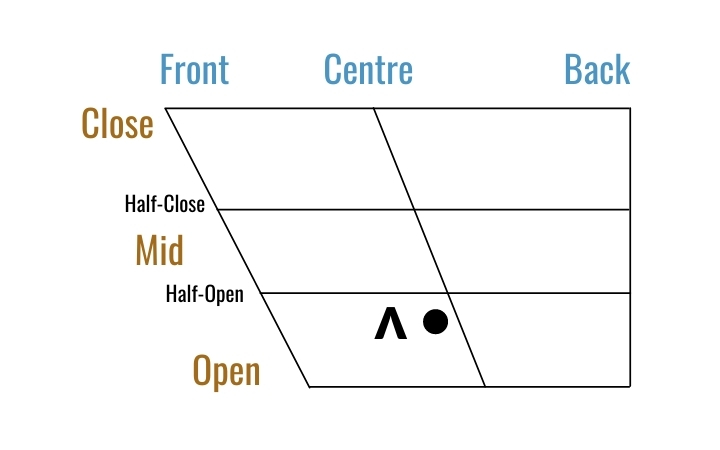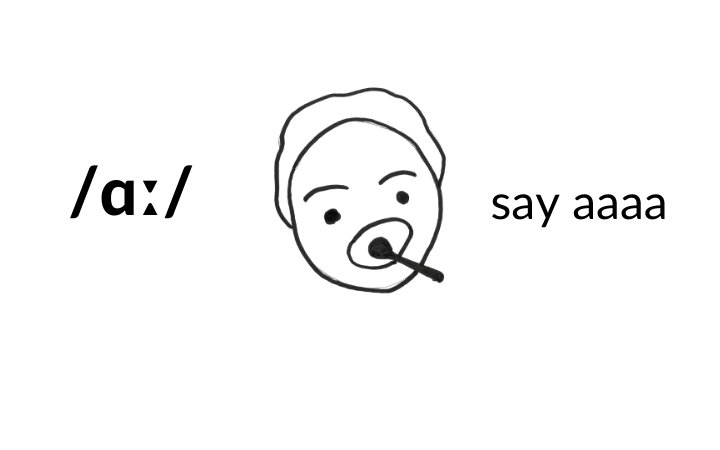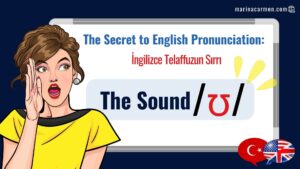Master the Pronunciation Theory & Practice and Become Comfortable Teaching it!
Open Vowels


For open vowels the tongue is low in the mouth.
Moving from /æ/ through to /ɒ/, we also notice the different positions of the tongue;
/æ/ is a front vowel, and
/ɒ/, is a back vowel.
Let's see the characteristics for each Open Vowel
/æ/
/æ/ - Technical Name - ‘Near-Open Front Unrounded Vowel’.
The Technical Name tells us about HOW the sound is made physically (about what muscle we use, and how we use them).

The front of the tongue is raised to just below the half-open position.
(The ‘close’ position is where the tongue is closest to the roof of the mouth.)
Lips are neutrally open.
Visuals to help you remember /æ/ easier.

Common Words including the sound /æ/
The /æ/sound is normally spelled with the letter ‘a’.
Homophones – words which have the same pronunciation but different spellings.
/æ/Sound difficulties for:
Arabic, Chinese, French, German, Greek, Indian Languages, Italian, Japanese, Portuguese, Russian, Scandinavian Languages, Spanish and Turkish.
Tips for sound difficulties:
Check the Phonology of your own first Language of your Students’ first Language (L1) on Wikipedia.
See what English sounds don’t exist in your/your Students L1. Proactively anticipate possible difficulties.
Here is the Phonology of my L1. (Ro)
Here is the Phonology of my Students’ L1. (Tr)
Which is Yours?
(if you are not a native English speaker, of course! 
Which one is/are your students’?
/ʌ/
/ʌ/ - Technical Name - ‘Open Mid-Back Unrounded Vowel’.
The Technical Name tells us about HOW the sound is made physically (about what muscle we use, and how we use them).

The centre of the tongue is raised to just above the fully open position.
Lips are relaxed and neutrally open.
Visuals to help you remember /ʌ/ easier.

Words including the sound /ʌ/
Homophones – words which have the same pronunciation but different spellings.
/ʌ/ Sound difficulties for:
Arabic, Chinese, French, Greek, Italian, Japanese, Portuguese, Scandinavian Languages, Spanish, Turkish
/ɑː/
/ɑː/ - Technical Name - ‘Open Back Unrounded Vowel’.
The Technical Name tells us about HOW the sound is made physically (about what muscle we use, and how we use them).

The tongue, between the centre and the back, is in the fully open position
Lips are relaxed and neutrally open.
Visuals to help you remember /ɑː/ easier.

Words including the sound /ɑː/
Homophones – words which have the same pronunciation but different spellings.
/ɑː/ Sound difficulties for:
Arabic, Chinese, French, German, Greek, Indian Languages, Italian, Japanese, Portuguese, Russian, Spanish and Turkish.
/ɒ/
/ɒ/ - Technical Name - ‘Open back rounded vowel’.

The back of the tongue is in the fully open position.
Lips are lightly rounded.
Visuals to help you remember /ɒ/ easier.

Words including the sound /ɒ/
/ɒ/ Sound difficulties for:
Indian
Teaching TIPS:
Discovering the key muscles for the Close Vowels
Adrian Underhill is a legend in teaching Pronunciation and you can find on his blog a lot of useful information in this regard.You can access it on the links below:
Blog Articles:
Discovering the vowel /ʌ/ part 1
Discovering the vowel /ʌ/ part 2
YouTube Videos
Using HOMOPHONES
Homophones – Words which have the same pronunciation but different spellings.
See the homophones given above for each Close Vowel.
Using Minimal Pairs
Minimal Pairs – A Pair of Words that differ in meaning when only one sound (one phoneme) is changed.
You can find more Minimal Pairs with the sounds/æ/and /ʌ/ (structured by English Level and with audio included) HERE, on EnglishClub.com
Using TONGUE TWISTERS
To help Learners noticing the differences between similar vowels and practice them in context we can make great use of TONGUE TWISTERS.
/e/and /æ/
Set a mat on the sand and get a tan.
/set ə mæt ɑːn ðə sænd ænd ɡet ə tæn/
Mend ten black pairs of pants for seven men in a trance.
/mend ten blæk pers əv pænts fɚ ˈsev.ən men ɪn ə træns/
Cashed his check, rented a tent he could mend, and camped on a patch of grass all weekend.
/kæʃt hɪz tʃek ˈren.tɪd ə tent hiː kʊd mend ænd kæmpt on ə pætʃ əv ɡræs ɑːl ˈwiːk.end/
/ʌ/ and / ə/
Double bubble gum, bubbles double.
/ˈdʌb.ə l ˈbʌb.əl ɡʌm bʌb.əl dʌb.ə l /
More Tongue Twisters with /ʌ/ and / ə/ HERE
A large part of the park was dark.
/ə lɑːrdʒ pɑːrt əv ðə pɑːrk wəz dɑːrk/
More Tongue Twisters with /ɑː/ HERE
References:
How to teach pronunciation by Gerald Kelly, Longman, 2000.
The sound /æ/ – English Language Club
How to remember IPA Phonems – English Jade
https://dictionary.cambridge.org
https://teflpedia.com/Open-mid_central_unrounded_vowel
https://www.englishclub.com/pronunciation/homophones-vowel-sound-e.htm
https://teflpedia.com/Open-mid_back_unrounded_vowel
https://www.englishclub.com/pronunciation/homophones-vowel-sound-or.htm
You can practice phonemes and sounds here:
Would love to know:
Do you feel comfortable teaching pronunciation?
What are some of your Struggles/Learnings/Tips?
Feel free to share in the comments below.
You never Know who you can help / inspire! 



 Unlock the secret to clear pronunciation! Discover how mastering the subtle differences between /ʊ/ and /uː/ can elevate your English skills.
Unlock the secret to clear pronunciation! Discover how mastering the subtle differences between /ʊ/ and /uː/ can elevate your English skills. Net telaffuzun sırrını keşfedin! /ʊ/ ve /uː/ arasındaki ince farkları öğrenerek İngilizce becerilerinizi nasıl geliştirebileceğinizi bakalım.
Net telaffuzun sırrını keşfedin! /ʊ/ ve /uː/ arasındaki ince farkları öğrenerek İngilizce becerilerinizi nasıl geliştirebileceğinizi bakalım.



 Did you know that “book” and “could” both have the /ʊ/ sound, even though they look different? Learning phonemes is the secret to great pronunciation!
Did you know that “book” and “could” both have the /ʊ/ sound, even though they look different? Learning phonemes is the secret to great pronunciation! 
 Let’s break it down and practice together.
Let’s break it down and practice together. 

